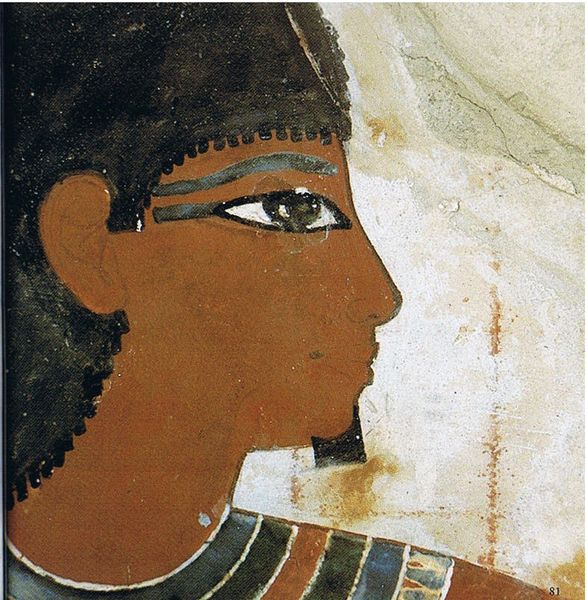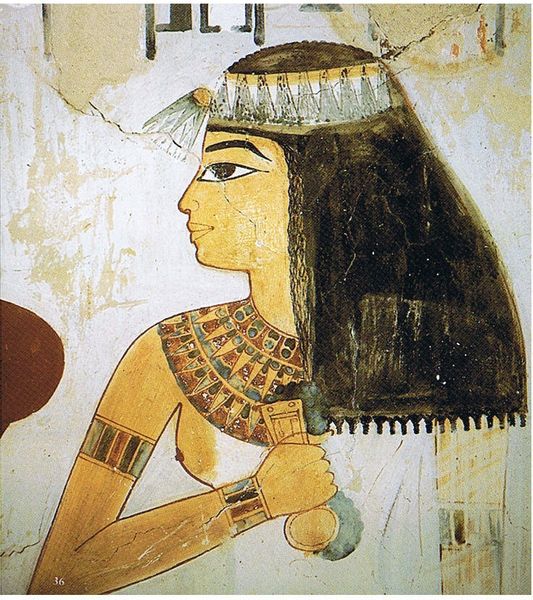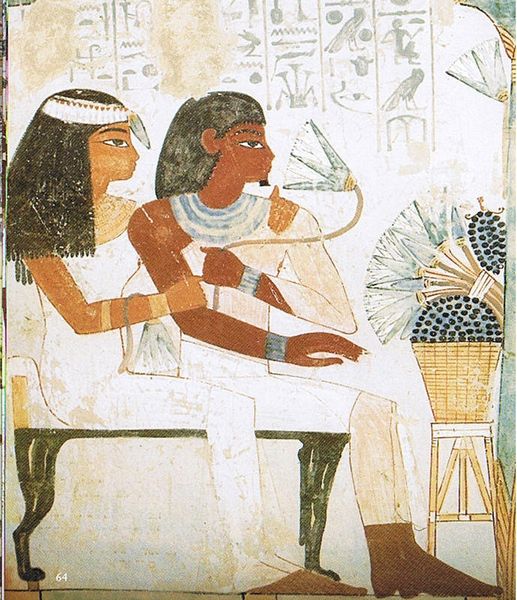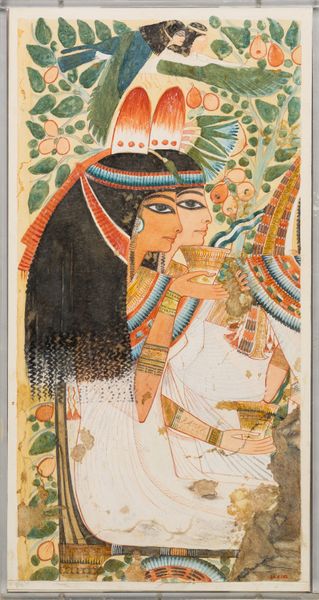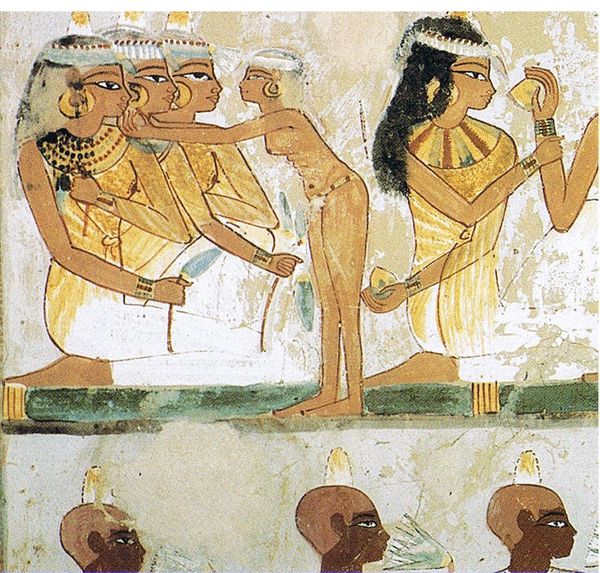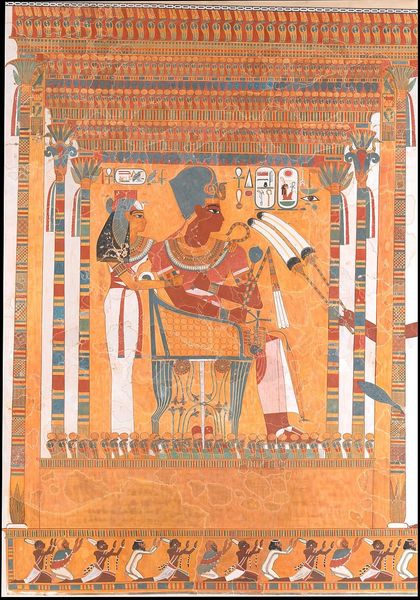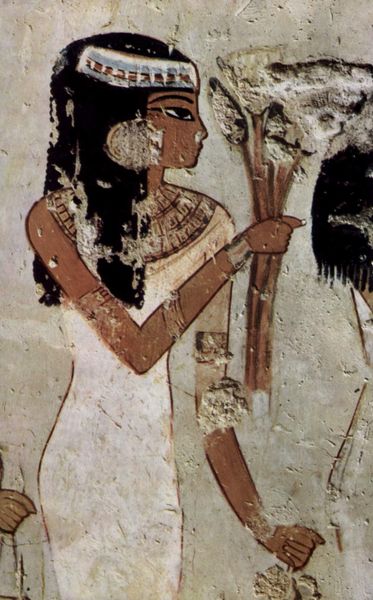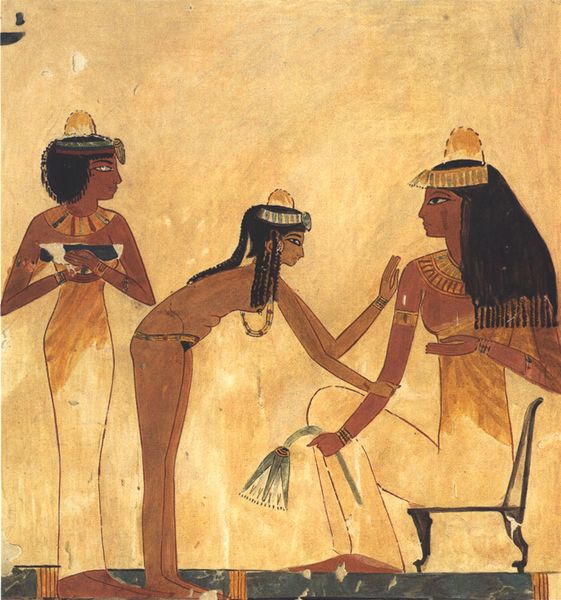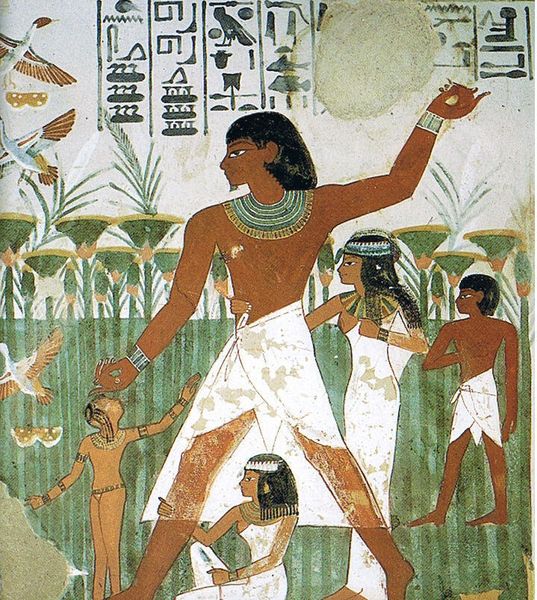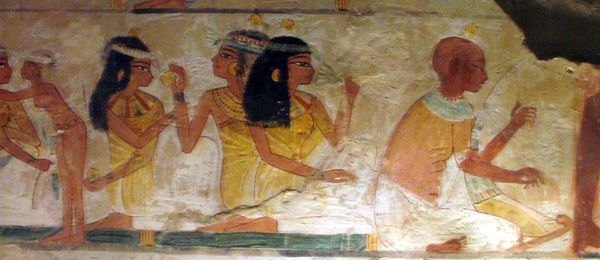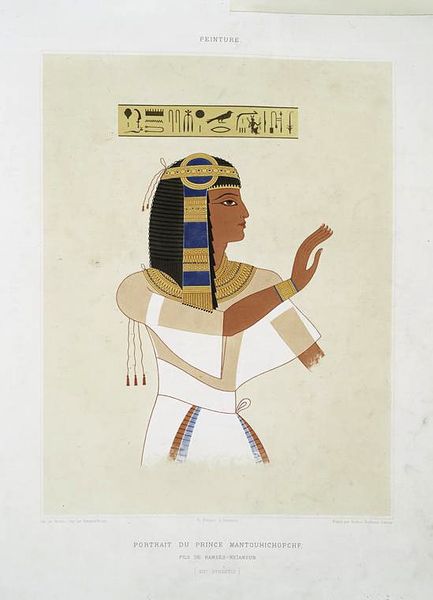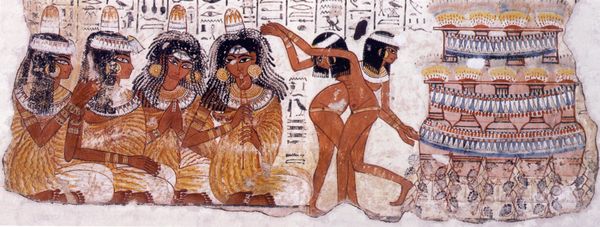
tempera
#
portrait
#
tempera
#
ancient-egyptian-art
#
figuration
#
form
#
ancient-mediterranean
#
history-painting
#
portrait art
Copyright: Public domain
Curator: Here we have "Kopf Der Dame Taui," a tempera artwork dating back to 1390 BC in Ancient Egypt. The face is incredibly serene. There’s something very striking about the way the black lines delineate her features against the lighter skin. Editor: Striking indeed. It evokes a sense of stillness, doesn't it? The gaze is so direct, but it's also impersonal. It almost feels like an archetypal image of royalty, rendered with tempera to offer earthly materials into art and power. I want to ask about what exactly tempera means for longevity, what sources of the land the artists tapped into, and what significance lies within such deliberate production? Curator: Absolutely. Consider that this portrait existed within the socio-political frame of Ancient Egypt. Its purpose exceeds mere aesthetic representation; this artwork served to embody the power and lineage associated with the sitter. Who was she? What did she represent? We can extrapolate much from her jewelry, hairstyle, headdress. Editor: Yes, and notice how the application of tempera creates such a smooth, almost glazed surface? What did it mean to manipulate such scarce resources to this end? We have to wonder about the hands of the artisans, and the society around the labor, but in its time how did viewers encounter such works? It gives us a small portal through process. Curator: I’m captivated by the enduring strength conveyed despite its apparent simplicity. There's something both intensely human and simultaneously iconic about it, raising questions of class, status, labor, power. "Kopf Der Dame Taui" still urges dialogues around gender, representation and Egyptian identity within contemporary art theory today. Editor: Absolutely. And those choices, that singular face frozen in time, speaks to the complex interaction of material reality and power structures of its own moment, and invites us to critically investigate our relationships between art and life as well. Curator: Yes, it offers us this timeless intersection, a mirror to then and a lens for our present. Editor: Indeed. Material and message, beautifully bound.
Comments
No comments
Be the first to comment and join the conversation on the ultimate creative platform.
